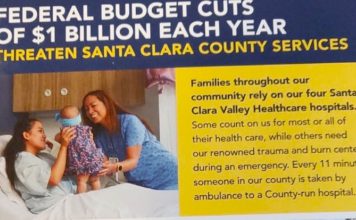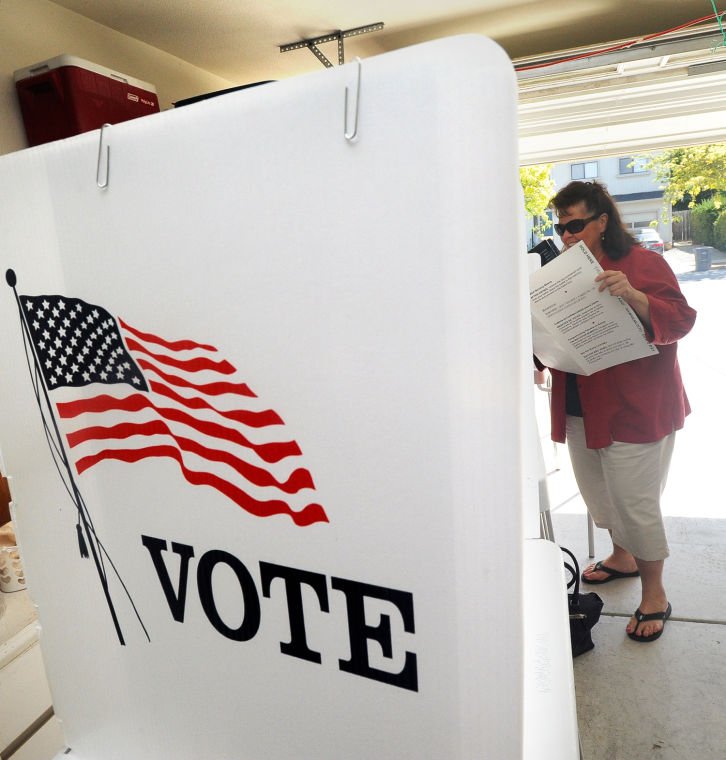GILROY
– The city has rescheduled a lobbying session by the Gilroy
Museum and the Gilroy Historical Society to Feb. 2, after just one
City Councilman made good on his promise to meet with the groups
Jan. 3.
GILROY – The city has rescheduled a lobbying session by the Gilroy Museum and the Gilroy Historical Society to Feb. 2, after just one City Councilman made good on his promise to meet with the groups Jan. 3.
Five City Councilmen accepted an invitation to hear about the impacts proposed budget cuts would have on the Fifth Street museum. However, only Roland Velasco showed up.
“We were pretty frustrated because we gave those invitations (on Dec. 15) in good faith, and we thought we were going to establish a dialogue (with Council),” said Connie Rogers, president of the historical society, which works closely with the museum on historical and cultural projects.
Rogers said it’s the second time in recent weeks the museum staff and the historical society felt slighted by City Council. When a citywide facilities tour for new Councilmen had to be hurried along a few weeks ago, the two places that went unvisited were the museum and the Willey Cultural Center.
“I don’t think they realize the importance of the museum and what we do,” Museum Coordinator Lucy Solorzano said. “We do other outreach programs I don’t think they’re aware of, which is why it’s important to meet with them.”
Like many other city programs and services, the museum faces potentially drastic cuts in 2004-05, especially if things go awry with Gov. Arnold Schwarzenegger’s plan to pay cities back for lost car tax revenue. Museum and historical society officials want to show the Council what they’ll be cutting if a first phase of cuts gets implemented at the city.
Phase one would reduce museum hours from 29 to 14, which could mean letting go of one of the two part-time workers that run the museum now. Already in July, staff hours were reduced at the museum from 50 to 29.
“The museum hours remained the same,” Recreation Superintendent Cheryl Bolin said. “There were inefficiencies in the operation of the museum that were found by an audit (of the city’s entire community services department). The museum program was not hurt (by the July cut).”
The museum remains open: Monday, Tuesday, Thursday and Friday from 10 a.m. to 5 p.m.; the first Saturday of the month from 10 a.m. to 2 p.m.; and it is closed on Wednesdays and Sundays.
If the budget crisis worsens, the museum program would be hurt in a second phase of budget cuts. The museum would close altogether.
About $16,500 a year would be saved on reduced staff hours, under the first phase of cuts, according to city documents. The savings jump to $140,000 if the museum were shut down altogether.
For Rogers, saving $16,500 – less than .05 percent of the general fund expense budget – is not worth a nearly museum-less Gilroy.
The museum, Rogers said, is a tourism, educational and research resource for the city. While the 1910 Andrew Carnegie Library may not draw visitor numbers like the Gilroy Premium Outlets or Costco, it makes up a network of tourist draws in Gilroy, Rogers said.
The museum, which is visited by classes on field trips, also has a program – called the Traveling Trunk – that can take museum artifacts to classrooms to hold history lectures there. The museum’s collection of photos and newspapers also provides researchers and the media – including sports network ESPN, which did a feature on Jeff Garcia recently – with historical information they need.
“The museum is not just a place for storing artifacts,” Rogers said.
Mayor Al Pinheiro, who was one of the councilmembers that did not attend the January meeting, said he believes in the museum’s mission and has no intention of dismissing its importance. Pinheiro said he could not attend the January session due to a “last minute emergency.”
“Nothing we’re (funding) right now do we feel is unimportant,” Pinheiro said. “As an individual and as a mayor I believe very much in preserving history.”
But Pinheiro said he is not ready in these budget shaky times to promise any individual program or service they will be untouched by cuts.
“We might not save a lot by cutting the museum, but when you have all the players lined up and everyone is asking they don’t get cut, the amount adds up,” Pinheiro said.
Rogers and Solorzano have for months been trying to put together a volunteer program in which members of the community could help with museum projects and give tours. Within the most recent publishing of the city’s Community Services Winter/Spring Program Guide, they devoted a section of the museum page to an ad asking for volunteers. Ten people responded.
In a scenario where the city cuts museum hours to save costs for staff, it’s conceivable that volunteers could be used to keep the regular hours at close to current levels. However, if the city needs to slice the full $140,000 in staff, utility and custodial costs, then no amount of volunteerism can help matters much.
“We’re remaining optimistic. We’re not there (making budget cuts) now, and we may not have to make budget cuts at all,” Bolin said.













